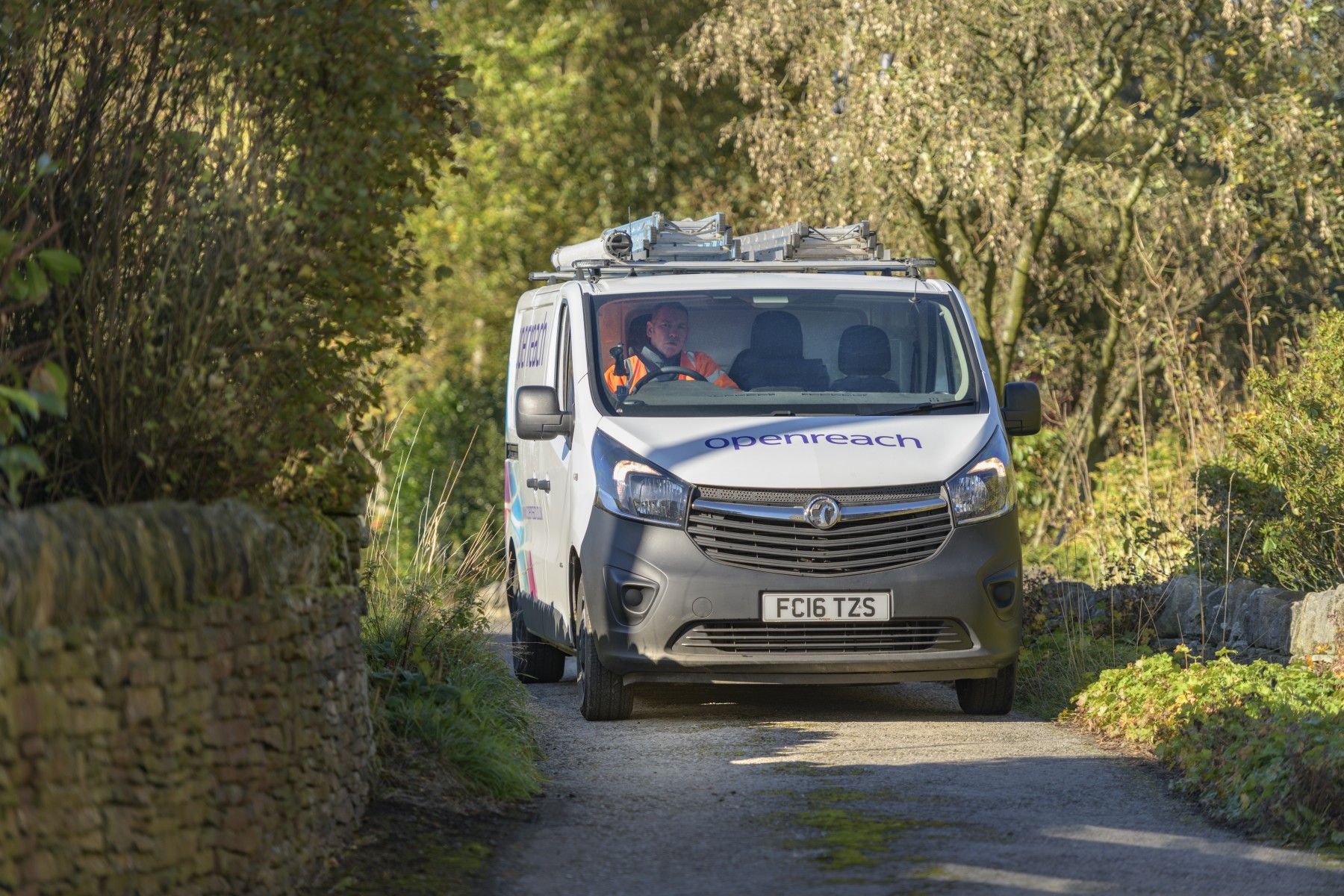Openreach pledge to upgrade ‘harder to reach’ areas brings a broadband boost to Lancashire
An Openreach pledge to make ultrafast, ultra-reliable and future-proof broadband available in several market towns and villages across the North West has become a reality in the Lancashire communities of Parbold, Newburgh, Burscough, Hesketh Bank, Becconsall and Tarleton.*
Nearly 7,000 homes and businesses across the six locations can now access ‘full fibre’ broadband speeds of up to one gigabit per second (1000Mbps) – that’s more than 15 times faster than today’s UK average broadband speed.
As designated key workers, Openreach engineers have been hard at work throughout the Covid-19 lockdown, building the new network that uses the latest Fibre-to-the-Premises (FTTP) broadband technology – where fibre optic cables are laid all the way from the local telephone exchange to people’s front doors.
And in the coming months a further 3,800 homes and business are also set to benefit as engineers continue installing the cables and infrastructure required.
Robert Thorburn, Openreach’s Regional Partnership Director in the North, said: “We’re making great progress here in Lancashire, and our full fibre build has continued despite the obvious challenges. As well as keeping people connected using our existing network, our engineers have continued building the new infrastructure to make sure that as lockdown restrictions ease, we can support families, businesses and the economic recovery.
“I’d encourage everyone who can to upgrade to the new technology and take advantage of the many benefits. Full fibre is more reliable and more resilient, meaning fewer faults and more predictable, consistent speeds. It’s also ‘future-proof’ as we expect it to easily meet the growing data demands of future technologies for decades to come.”
Recent research suggests the new network could bring clear economic benefits as Lancashire looks to bounce back from the impact of the Covid-19 pandemic.
A report by the Centre for Economics & Business Research (Cebr) found that connecting everyone in the North West to ‘full fibre’ broadband would create a £5.5 billion boost to the local economy, by unlocking smarter ways of working, better public services and greater opportunities for the next-generation of home-grown businesses.
The report also revealed that 54,000 people in the region could be brought back into the workforce through enhanced connectivity - including in small businesses and through entrepreneurship.
Openreach recently expanded its national plans and will now make FTTP technology available to 4.5 million homes and businesses across the UK by the end of March 2021 – an increase of more than 500,000 premises. And by the mid-to-late 2020s we want to reach 20 million premises – almost two thirds of the UK – areas assuming the right conditions to invest are in place.
To find out more visit www.openreach.co.uk/fibrecheckerpr.
Ten fantastic full fibre facts:
- Connecting everyone in the North West to ‘full fibre’ broadband by 2025 would create a £5.5 billion boost to the region’s economy.
- Fibre optics are strands of glass around one tenth the thickness of a human hair. They transmit data using light signals.
- A single strand of fibre can provide enough capacity to serve up to 32 individual properties with Gigabit speeds.
- Pure fibre optic broadband can run at speeds of 1 gigabit per second (1000Mbps) – that’s more than 15 times faster than today’s UK average broadband speed. You can download a two-hour HD film in less time than it takes to make a cup of tea. And video gamers could download a 5-gigabyte virtual reality (VR) game in 1.7 minutes, instead of waiting half an hour.
- More people getting online at the same time is easier too – a family of four can all stream ultra HD or 4k quality video simultaneously, without waiting or buffering.
- Full fibre is more reliable than traditional copper connections. A full fibre broadband signal isn’t affected by external interference whereas copper can be impacted by outside electrical signals – including electric fences and even bad weather! One recent report stated ‘that ‘full fibre’ is 70%-80% more reliable than copper resulting in lower fault rates.’
- A fibre optic cable can send a signal over 120 miles without any real loss of quality. Traditional copper cables can lose signal at around one mile.
- Full fibre is better for the environment – the amount of electricity used to power fibre is significantly less than needed for copper cables. Better connectivity also enables more people to work from home – which cuts down on commuting. Research suggests fibering up the whole of the UK could save 300 million commuting trips – reducing carbon emissions by 360,000 tonnes.
- Full fibre can boost business productivity. It enables cheaper broadband powered phone services, and better access to cloud-based computing services. For example, full fibre connectivity combined with cloud computing means businesses can upload, store, access and download vast amounts of data in minutes instead of hours. Data is backed up and securely archived off-site so not relying on costly, ageing servers taking up expensive office space.
- Full fibre broadband will be crucial in supporting plans to give NHS patients access to ‘virtual clinics’ where patients who don’t physically need to come hospital can get a video consultation with their doctor. It can also allow hospitals to share HD quality graphics of medical scans in seconds to improve diagnosis speeds. For example, medical staff can download a 2 gigabyte CT scan in 40 seconds, instead of 14 minutes.
-ends-





















